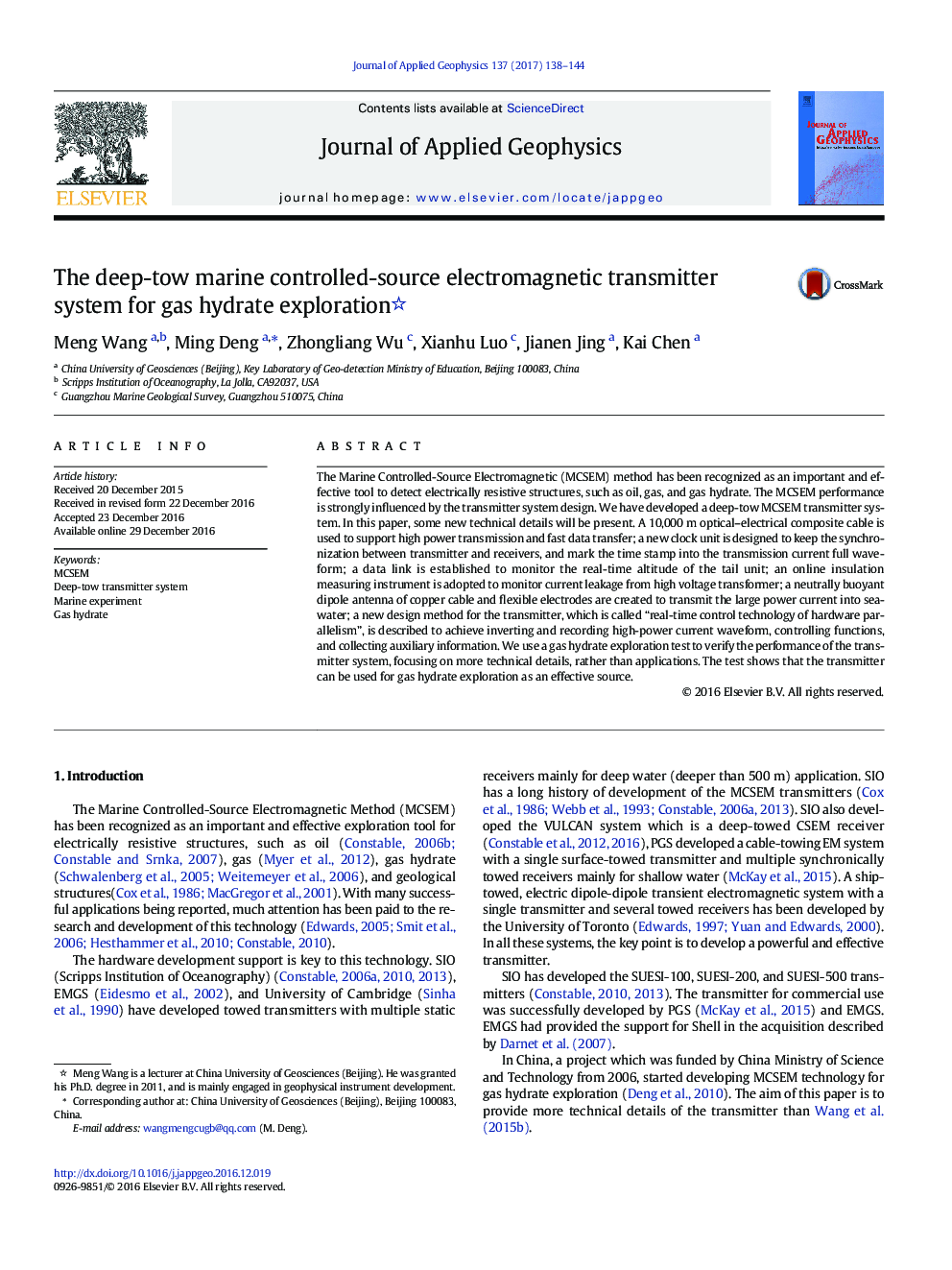| Article ID | Journal | Published Year | Pages | File Type |
|---|---|---|---|---|
| 5787185 | Journal of Applied Geophysics | 2017 | 7 Pages |
Abstract
The Marine Controlled-Source Electromagnetic (MCSEM) method has been recognized as an important and effective tool to detect electrically resistive structures, such as oil, gas, and gas hydrate. The MCSEM performance is strongly influenced by the transmitter system design. We have developed a deep-tow MCSEM transmitter system. In this paper, some new technical details will be present. A 10,000 m optical-electrical composite cable is used to support high power transmission and fast data transfer; a new clock unit is designed to keep the synchronization between transmitter and receivers, and mark the time stamp into the transmission current full waveform; a data link is established to monitor the real-time altitude of the tail unit; an online insulation measuring instrument is adopted to monitor current leakage from high voltage transformer; a neutrally buoyant dipole antenna of copper cable and flexible electrodes are created to transmit the large power current into seawater; a new design method for the transmitter, which is called “real-time control technology of hardware parallelism”, is described to achieve inverting and recording high-power current waveform, controlling functions, and collecting auxiliary information. We use a gas hydrate exploration test to verify the performance of the transmitter system, focusing on more technical details, rather than applications. The test shows that the transmitter can be used for gas hydrate exploration as an effective source.
Keywords
Related Topics
Physical Sciences and Engineering
Earth and Planetary Sciences
Geophysics
Authors
Meng Wang, Ming Deng, Zhongliang Wu, Xianhu Luo, Jianen Jing, Kai Chen,
